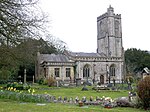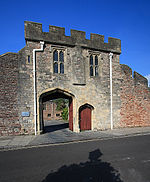King's Castle, Wells

King's Castle is an Iron Age enclosed hilltop settlement at the south-western edge of the Mendip Hills near Wells in Somerset, England. Though there are many prehistoric sites in the surrounding area, it remains one of the earliest known settlements in the immediate vicinity of Wells, and may have been a precursor to the present day city. It consists of two or three interlinked sub-enclosures, with what appears to be a field system extending to the east; an unusual layout, the site remains relatively little studied and has not been archaeologically excavated. It is a Scheduled Ancient Monument, and shares its name with the surrounding King's Castle Wood—today a Somerset Wildlife Trust nature reserve—though this name is probably a modern invention.
Excerpt from the Wikipedia article King's Castle, Wells (License: CC BY-SA 3.0, Authors, Images).King's Castle, Wells
Old Frome Road, Mendip St Cuthbert Out
Geographical coordinates (GPS) Address Phone number Website Nearby Places Show on map
Geographical coordinates (GPS)
| Latitude | Longitude |
|---|---|
| N 51.2084 ° | E -2.6191 ° |
Address
Wells Golf Club
Old Frome Road
BA5 3DS Mendip, St Cuthbert Out
England, United Kingdom
Open on Google Maps










